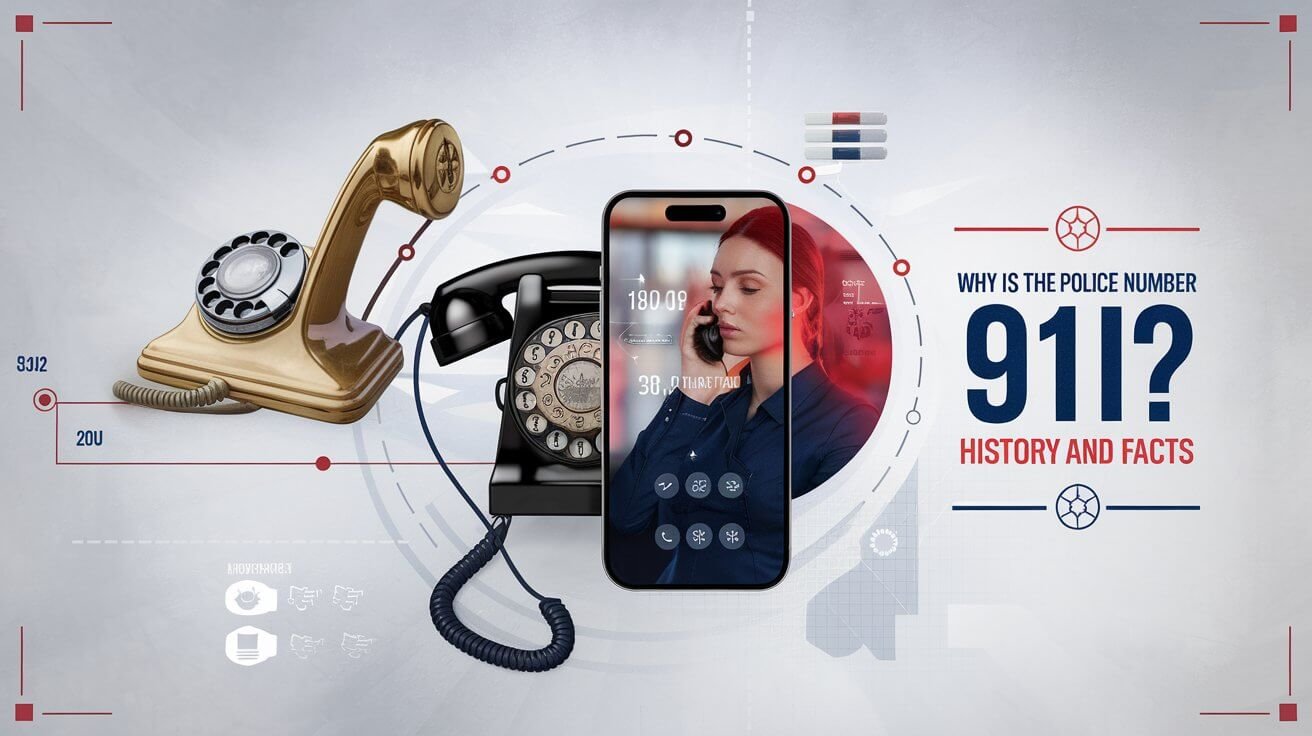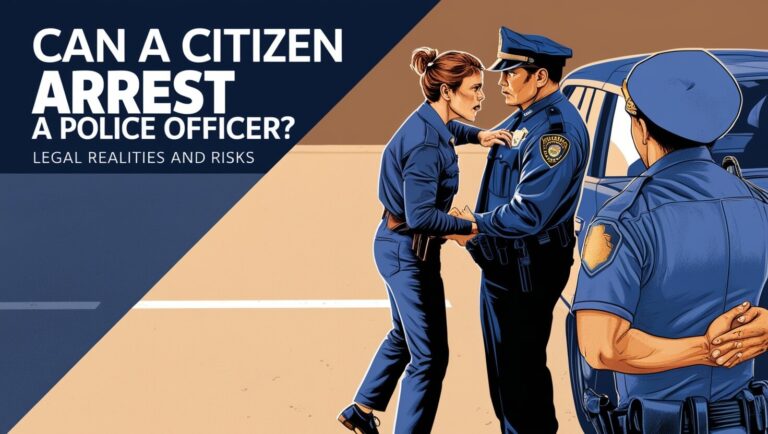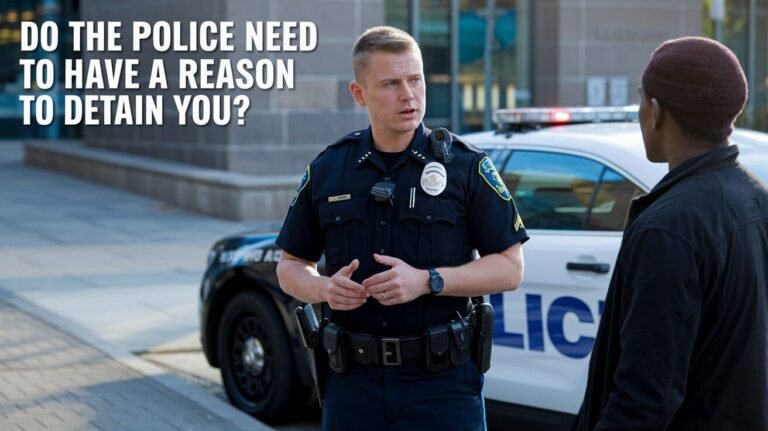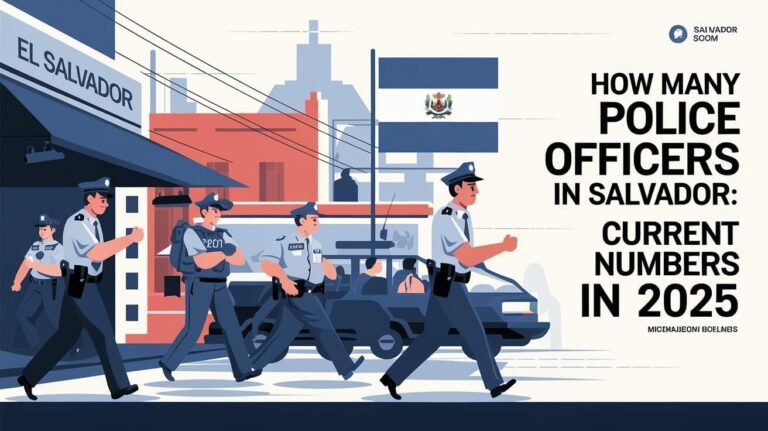Why Is The Police Number 911? History and Facts

In an emergency, every second counts. You might wonder why 911 is the go-to number in the U.S. It’s a story of innovation and teamwork that changed how we get help in emergencies.
The Birth Of Emergency Numbers: British Innovation
The UK was the first to introduce the world’s first emergency number, 999, in 1937. This move inspired other countries to create their own emergency systems. Each system was designed to meet the specific needs of its people.
The 999 System Implementation
The UK’s 999 emergency number was created to make it easier to report emergencies. It was a simple, memorable number for people to call in urgent situations. In its first week, the system got 1,336 calls, showing how much people needed a central emergency service.
Global Emergency Number Development
After the UK, other countries like Belgium, Denmark, Sweden, and Canada followed with their own emergency numbers. Australia chose 000 as its national emergency number. The goal was to make emergency systems easy to use and quick to respond to emergencies.
Early Emergency Response Methods
Emergency response methods were different around the world. Some focused on medical help, while others had systems for police, fire, and more. The aim was to make reporting emergencies easier and to send the right help quickly.
| Country | Emergency Number | Year Implemented |
|---|---|---|
| United Kingdom | 999 | 1937 |
| Belgium, Denmark, Sweden | 112 | N/A |
| Canada | 911 | 1972 |
| Australia | 000 | N/A |
Why Is The Police Number 911?
The choice of 911 as the emergency number in the U.S. was practical. The American Telephone and Telegraph Company (AT&T) picked it because it was simple and easy to remember. It was also quick to dial on rotary phones.
The middle digit ‘1’ made it stand out, like other codes like 411 and 611. This made it a clear choice for a special number.
Also, 911 fit well with the existing phone system. It wasn’t used as an area code or office code before. This made it perfect for a nationwide emergency number.
- In 2017, about 240 million calls were made to 911 in the United States.
- By 1979, about 26 percent of the United States population had access to 911 service.
- In 1987, roughly 50 percent of the U.S. population had 911 service available.
- By 1999, approximately 95 percent of the U.S. population was covered by 911 service.
The 911 emergency system grew fast in the late 1970s. It added 70 new local systems each year. This shows how quickly and widely it was adopted across the country.
The Historic First 911 Call In Haleyville, Alabama
The first 911 call in the United States was made on February 16, 1968, in Haleyville, Alabama. This event started the use of 911 across the country. It changed how Americans get help in emergencies.
Key Figures Behind The First Call
Alabama Speaker of the House Rankin Fite made the call. He dialed the new three-digit number to reach U.S. Representative Tom Bevill. Bevill answered at the Haleyville police station. This showed the importance of a reliable emergency system.
Impact On Emergency Response Systems
The first 911 call in Haleyville happened just 35 days after AT&T announced 911 as the national emergency number. The call was answered on a bright red phone. This phone is now in Haleyville City Hall, showing the city’s impact on emergency services.
The success in Haleyville made other places want to use 911 too. This led to 911 being used all over the country. It also led to better technologies like Enhanced 911 (E-911) and Computer-Aided Dispatch (CAD) systems. These have made emergency responses much better over the years.
AT&T’s Role In Establishing The National Emergency Number
AT&T was key in making 911 the national emergency number in the U.S. In January 1968, they announced 911 was ready for use across the country. They worked with the Federal Communications Commission (FCC) to quickly make this single emergency number a reality. This was in response to growing concerns about crime, accidents, and medical emergencies.
The idea of 911 started in the late 1950s when the FCC set aside “9-1-1” for emergency use nationwide. AT&T chose 911 for its simplicity and ease of remembering. This partnership led to the first 911 call in Haleyville, Alabama in 1968.
Over the years, AT&T’s dedication to 911 helped it spread across the country. By the late 1970s, over a quarter of Americans could dial 911 for help. By 1987, half the country could. Today, 98.9% of Americans have access to 911, thanks to AT&T’s early work and ongoing support.
| Year | Milestone |
|---|---|
| 1958 | FCC reserves “9-1-1” for use as a universal emergency number in the U.S. |
| 1968 | AT&T selects “9-1-1” as the emergency code for the U.S. due to its brevity and ease of remembering |
| 1968 | First 9-1-1 call made in the U.S. from Haleyville, Alabama |
| 1970s | By the end of the decade, 26 states had adopted the 911 emergency system |
| 1980s | Over 50% of the US population had access to the 911 system |
| 1999 | The FCC passed the 911 Act, requiring all phone companies to provide 911 service to all customers |
| 2009 | Approximately 96% of the geographic U.S. territory is covered by some form of 9-1-1 service |
| 2022 | 98.9% of the U.S. population has access to 911 service |
The Nationwide Implementation Journey
The 911 system rollout in the U.S. took many years. By 1979, only 26% of people could call 911. But, by 2000, this number jumped to 93%.
Despite progress, the path to full 911 coverage was tough.
State-by-State Adoption Rates
States adopted 911 at different paces. Some were fast, while others faced money and tech issues. By March 2022, 98.9% of Americans could call 911, showing ongoing efforts to improve 911 coverage expansion.
Challenges During Implementation
The 911 system rollout hit many bumps, like high costs and uneven emergency number adoption. Getting 911 to work across different areas and systems was hard. Yet, the hard work of many helped the 911 system grow.
Coverage Milestones Through Decades
The 911 system’s growth in the U.S. has seen big steps forward. Starting with 26% in 1979, we now have 98.9% coverage. This shows the country’s strong commitment to reliable emergency services.
Enhanced 911: Modern Technology Integration
The 911 emergency system has changed a lot over time. Enhanced 911 (E911) is a big step forward in making emergency help faster and more accurate. E911 systems send the caller’s location to dispatchers right away.
About 96% of the United States has E911 now. It uses Automatic Location Identification (ALI) databases to find where a call is coming from. For mobile phones, it uses cell network or GPS to get a precise location.
E911 has made emergency services much better. It does more than just find where a call is coming from:
- Automatic Number Identification (ANI) shows the caller’s phone number to emergency operators
- It works well with Public Safety Answering Points (PSAPs) for quicker help
- It supports text-to-911 and helps those who are hard of hearing
- It sends automatic crash alerts to emergency services
Not every state has E911 yet, because of different rules and technology levels. But the main goal is to help emergency services by giving them the caller’s location and other important info. This helps save lives and make people safer.
| E911 Technology | Description |
|---|---|
| GPS Technology | E911 systems use GPS to give emergency dispatchers exact location data. |
| Cell Phone Tower Triangulation | E911 also uses cell phone towers to find the caller’s location accurately. |
| Wi-Fi Positioning | Another way E911 finds the caller’s location is through Wi-Fi positioning technology. |
The Rise Of Computer-Aided Dispatch Systems
Computer-aided dispatch (CAD) systems have changed how we handle emergencies. They let dispatchers keep detailed records of services like EMS, police, and fire. They also send messages straight to responders on their mobile devices.
The CAD market is growing fast, expected to hit $3.95 billion by 2028. This growth is at a rate of 12.5% each year.
Evolution Of Emergency Response Technology
CAD systems have been key in public safety since the 1970s. They started in the 1960s and became common in the 1990s. Now, with new tech like AI and machine learning, they can do even more.
Integration With Mobile Networks
The link between CAD systems and mobile networks has changed emergency response. Dispatchers can send messages to responders’ devices. This makes responses faster and more efficient.
This connection also means better communication in real-time. It helps emergency services get to people in need quickly.
| Statistic | Value |
|---|---|
| CAD Market Size (2021) | $1.73 billion |
| Projected CAD Market Size (2028) | $3.95 billion |
| Compound Annual Growth Rate (CAGR) | 12.5% |
| Highest-Growing Market for CAD | North America |
911 Services Beyond United States Borders
The 911 emergency number is known worldwide, not just in the United States. Many countries have their own versions of 911. This means people in trouble can get help fast, no matter where they are.
Canada was one of the first to use 911, starting in 1972. Now, countries like Mexico, the Philippines, and many in the Caribbean use it too. Even some British Overseas Territories in the Caribbean use 911, thanks to the North American Numbering Plan.
The use of international 911 services and global emergency numbers shows how important it is to have access to help in emergencies. By having a standard for emergency calls, countries can work better together. This helps save lives in emergencies.
As technology gets better, emergency calls will get even more efficient. Next Generation 911 (NG911) and digital tools like photos and videos will change how we get help. This will make it easier for emergency responders to help people in need quickly and effectively.
Funding And Maintenance Of The 911 System
In the United States and Canada, 911 services get most of their funding from monthly fees on phone bills. This money is crucial for keeping the 911 system running smoothly. It helps make sure 911 services are always there and getting better for everyone.
The way 911 is funded is set by laws in each state and province. It covers the costs of running the system, keeping it updated, and doing maintenance. This makes sure 911 can handle the needs of communities and keep up with new tech.
Thanks to the fees from phone users, emergency services can improve their systems. They can add Next Generation 911 (NG911) features and make 911 services faster and more reliable. This funding helps make sure everyone has access to emergency services when they need them.
Questions & Answers (Q&A)
What is the history of the emergency number 911?
The idea of a single emergency number started in the UK in 1937 with 999. The US began working on its own system in the 1950s. By 1968, 911 became the universal emergency number in the US.
How did other countries develop their emergency numbers?
The UK was the first to use 999 for emergencies in 1937. Other countries like Belgium, Denmark, and Sweden followed with 112. Canada chose 911 in 1972, and Australia used 000. Early systems focused mainly on medical help.
Why was 911 chosen as the emergency number in the United States?
911 was picked for several reasons. AT&T thought it was simple and easy to remember. It was also quick to dial on old phones. Plus, it fit well with existing systems and wasn’t already used for anything else.
What was the first 911 call in the United States?
The first 911 call was made on February 16, 1968, in Haleyville, Alabama. Alabama’s Speaker of the House, Rankin Fite, made the call. It was answered by U.S. Representative Tom Bevill, starting the 911 system in the US.
What was AT&T’s role in establishing the 911 system?
AT&T was key in making 911 the national emergency number. In January 1968, they said 911 was ready for use nationwide. They worked with the Federal Communications Commission to quickly introduce it, addressing public concerns about crime and emergencies.
How did the 911 system rollout nationwide in the United States?
The rollout of 911 was slow. By 1979, only 26% of Americans could call 911. This number grew to 50% by 1987 and 93% by 2000. It faced challenges like cost and varying adoption rates. Today, 98.9% of Americans can call 911.
What are the advancements in 911 technology?
Enhanced 911 (E911) systems give dispatchers the caller’s location. About 96% of the US has E911 now. It uses Automatic Location Identification (ALI) databases and GPS in mobile phones for accurate locations.
How have computer-aided dispatch (CAD) systems improved emergency response?
CAD systems have changed how emergencies are handled. They record logs and send messages to responders. CAD systems now work with mobile networks, improving response times and efficiency.
Is 911 used in other countries beside the United States?
Yes, many countries use 911. Canada started using it in 1972. Countries like Mexico, the Philippines, and some Caribbean nations also use it. Some British Overseas Territories in the Caribbean use 911 too.
How is the 911 system funded and maintained?
In the US and Canada, 911 services are funded by monthly fees on phone customers. These fees help keep the system running and improving. This ensures 911 services are always available and getting better.






